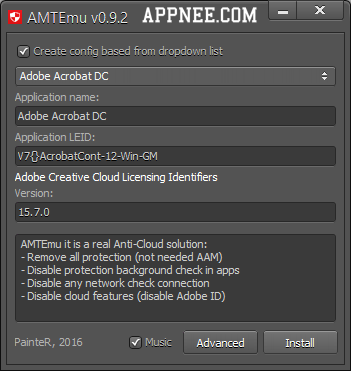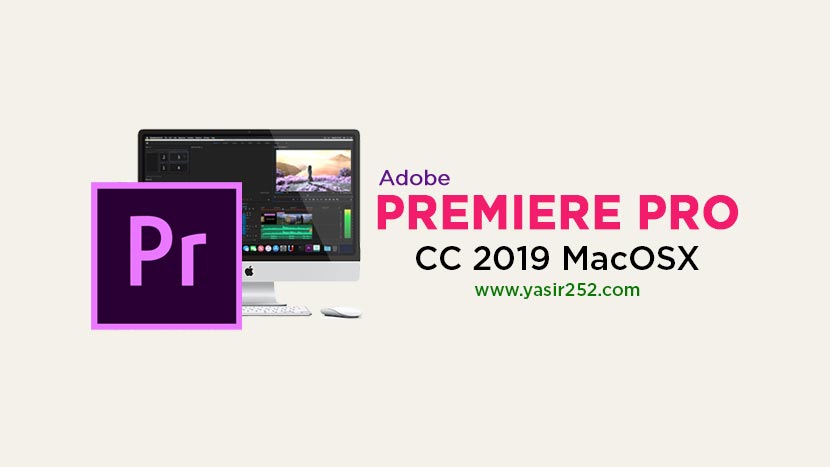Patch Adobe Mac
Got a message that says you have to update Flash Player on Mac? Don’t promptly click the update button. If you are not careful, you can accidentally install adware or malware instead of Flash Player. And that’s not what you need, right?
If Software Update says that your Mac is up to date, then macOS and all of the apps it installs are up to date, including Safari, Messages, Mail, Music, Photos, FaceTime, Calendar, and Books. If you want to update apps downloaded from the App Store, use the App Store to get updates.
- The Setup.exe file uses Setup.ini as it’s configuration file. Before deployment, open Setup.ini, verify it contains all the properties you need, and edit it as neccessary. Setup.ini contains two sections: Startup: Setup.exe first executes the Adobe flags for CmdLine. Do not place Adobe properties or MSI switches here; for example, you can.
- Remote Update Manager works whether you have suppressed manual updates on client machines. If you want all the updates to be stored locally on a server from where the client machines will access it when you invoke Remote Update Manager, use the Adobe Update Server Setup Tool (AUSST). See Running Remote Update Manager with AUSST.
In this article we’ll show you the best way to check for Flash updates and also give you a comprehensive guide to update Adobe Flash Player for Mac safely. Plus, we’ll tell you how to uninstall it from your computer completely.
What is Flash Player?
For years, Adobe Flash Player has been one of the most popular plug-ins used by web browsers to reproduce videos, web ads, and interactive animations. But now its position is rocked by some security concerns and safer alternative solutions.
Google Chrome and Firefox contain the built-in version of Flash running in the sandboxed mode. This method is safer than running Flash as a plugin. What about Safari, it disables Flash Player by default starting from macOS Sierra. The point is that Apple wants you running on HTML5 — the newer and safer way of browsing the web. It supports the same multimedia elements as Flash but without any security issues.
However, the reality is that you still may need the Adobe Flash Player on your Mac. Many websites will not work if you uninstall it completely. Live streams like BT Sport can only be delivered in Flash, so if you are the BT Sport customer, you’ll want to keep the Flash Player. In addition, a great number of gaming and education sites use Flash and until they implement the HTML5 standards, you’ll need the Flash Player.
Why watch out for Flash updates on Mac?

Adobe is always trying to push its technology further and release the Flash updates to enhance the user experience and security. However, attackers still find the ways to trick you into downloading adware and malware through the popups. That’s why you should know how to protect your Mac against the malicious attacks when you’re trying to update your Adobe Flash for Mac.
Fortunately, it’s easy to make sure that you are installing the real Flash for Mac and are not exposed to the vulnerable software. All you have to do is to be careful and don’t trust the automatic updates.
How to update Flash Player on Mac (if it’s already installed)
Instead of downloading anything from a popup, follow simple steps to check whether you really need to update Adobe Flash on Mac.
Go to the Apple menu and click System Preferences.
In the bottom left corner, choose Flash Player.
Choose the Updates tab.
Click the Check Now button.
If an update is available, click Yes to update. If no updates are available, you have the latest version of a Flash Player for Mac installed.
Easy enough, right? Make sure to invest some time and check if you do need to update Flash. Otherwise, downloading a false software package may harm your computer.
How to install Flash on your Mac safely
If Flash is not installed, which is by default on all new Macs, here’s a step-by-step guide to install it safely.
Visit the Adobe Flash Player page.
Click the Download now button.
The installer will download to your computer. If you’re using Safari, the file will go to your Downloads folder. If you’re using another browser, it may ask where to save the file.
Open your Downloads folder and find the .dmg installer file.
Double-click the Install Adobe Flash Player file.
You will be asked if you really want to install Adobe Flash Player. Read the message carefully to make sure that it’s the file you just downloaded. Click Open to proceed.
Agree to terms and conditions by clicking a checkbox.
Click the Install button.
In the window that appears, type your username and password.
Click the Install Helper button.
Click Allow Adobe to install updates (recommended).
Click Done.
That’s it. It’s also recommended to relaunch your web browser after installing Flash.
How to uninstall Flash completely
If you’re concerned about the security flaws associated with your Adobe Flash Player, we’ll show you how to uninstall it from your Mac.
Usually, uninstalling Flash can cause a bit of headache. But with CleanMyMac X, you can remove Adobe Flash Player in a few clicks. Just follow these simple steps:
Download CleanMyMac X and launch it.
Go to the Extensions in the sidebar.
Click Preferences Panes and then checkmark Flash Player.
Click the Remove button.
As you see, uninstalling Flash with CleanMyMac X is as easy as pie. Moreover, the whole process won’t take more than five minutes. Try it out to uninstall Flash Player on Mac completely.
That’s it! Follow the tips above and don’t let the tricky popups and websites take advantage of you. This way you’ll stay up-to-date safely.
Even you don't know what Adobe Flash Player really is, you will still feel familiar with it. Because during the daily usage of your computer, you often get the message that you need to update Adobe Flash Player. Adobe Flash Player enables you to play flash videos on web browsers like Chrome, Safari, Firefox, etc. And you need to make the Flash update frequently.
Adobe Flash has caused many web plug-in vulnerability problems in the past, you have to update it from now and then. Updating Adobe Flash Player can be an automated process. However, you need to locate the update and install it on your Mac/PC. Here in this post, we will show you how to update Flash.
Update Flash - Adobe Flash Player update on Mac

The security flaws of Adobe Flash Player have affected Flash for Windows, Mac and Linux. If you are using the latest macOS High Sierra, you may notice that Apple has blocked Adobe Flash on Mac. In this part, we will show you how to update Adobe Flash Player on Mac Safari. You can take the following steps to make Adobe Flash Player update on Mac.
Step 1Click the 'Apple menu' and select 'System Preferences'.
Step 2On the bottom row of icons, click on 'Flash Player'.
Step 3Click the 'Updates' tab.
Step 4Click on the 'Check Now' button to check if there is an update needs to be installed. If an update is available, you'll be asked if you want to download and install it. Click the 'Yes' button to start to make Flash update on Mac.
Step 5Go to your 'Downloads' folder and double-click the file named 'install_flash_player_osx.dmg'.
Step 6Double click 'Install Adobe Flash Player' to start the installation process.
Step 7Agree to the terms of the license agreement and click the 'Install' button.
Step 8Enter your computer's administrative user name and password. After all these operations, Safari will open to give you confirmation that Flash has been updated properly.
Note: You are required to close 'System Preferences' and 'Safari' when you login the account.
Update Flash - Adobe Flash Player update on Windows 7/8/10/XP
If you are using a Windows 10/8/7/XP computer, you can take the following guide to get Adobe Flash Player updated.
Step 1Go to Control Panel and double-click on 'System and Security'.
Step 2On the bottom of the window, you can see the 'Flash Player'. Double double-click on it to enter the 'Flash Player Setting Manager'.

Step 3Click 'Updates' > 'Check Now' to check if there is an available Flash update. Then you can follow the directions to update Flash Player on your Windows computer.
What is Adobe Flash Player
Adobe Flash Player is the freeware for delivering high-impact and rich Web content. It can help you better view multimedia, execute rich Internet applications, and stream video/audio. Flash Player can work as a browser plug-in to run from a web browser or support portable iOS/Android device. It is created by Macromedia, and has been developed and distributed by Adobe Systems.
Adobe Patch Files Mac Delete
Along with the update of Flash Player, it includes a range of interesting additions and improvements when compared to previous versions. Designs, animation and application user interfaces are deployed immediately across all browsers and platforms, attracting and engaging users with a rich Web experience. Before you want to update Adobe Flash Player, you can check the details as below to see if your device can be compatible with Adobe Flash player:

| Platform | Browser | System requirements |
|---|---|---|
| Windows | Internet Explorer - ActiveX. Internet Explorer (embedded - Windows 8.1) - ActiveX Edge (embedded - Windows 10) - ActiveX Firefox - NPAPI Chrome (embedded) - PPAPI Opera, Chromium-based browsers - PPAPI | ➤ 2.33GHz or faster x86-compatible processor, or Intel® Atom™ 1.6GHz or faster processor for netbooks ➤ 32- and 64-bit (unless noted): Microsoft® Windows® XP SP3 (32-bit), Windows Vista® (32-bit), Windows 7, Windows 8.1 and Windows 10 ➤ Latest versions of Microsoft Internet Explorer, Microsoft Edge, Mozilla Firefox, Google Chrome and Opera ➤ 512MB of RAM (1GB of RAM recommended for netbooks); 128MB of graphics memory |
| Mac | Internet Explorer - ActiveX Chrome (embedded) - PPAPI Opera, Chromium-based browsers - PPAPI | ➤ Intel Core™ Duo 1.83GHz or faster processor ➤ Mac OS X v10.9, or later ➤ Latest versions of Safari, Mozilla Firefox, Google Chrome, and Opera ➤ 512MB of RAM; 128MB of graphics memory |
| Linux | Firefox - NPAPI Chrome (embedded) - PPAPI Opera, Chromium-based browsers - PPAPI | ➤ 2.33GHz or faster x86-compatible processor, or Intel Atom 1.6GHz or faster processor for netbooks ➤ YUM, TAR.GZ, RPM and APT packages for NPAPI and PPAPI ➤ Latest versions of Firefox or Google Chrome ➤ 512MB of RAM; 128MB of graphics memory |
| ChromeOS | ChromeOS - PPAPI |
We mainly talk about Adobe Flash Player and how to make Flash update in this post. Hope you can update your Flash Player correctly and solve media streaming issue after reading this post.
What do you think of this post?
Patch Adobe Cc 2017 Mac
Excellent
Rating: 4.6 / 5 (based on 15 ratings)
Patch Adobe 2020 Mac Catalina
May 29, 2018 16:20 / Updated by Jenny Ryan to Player